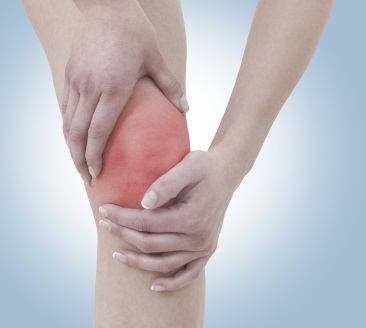Osteoarthritis Treatment- One problem, many solutions

There is no cure for osteoarthritis. Symptoms of arthritis can gradually worsen over time as we age. However, there are multiple treatment options that can reduce pain, increase mobility, and possibly slow the progression of the disease. There is no one osteoarthritis treatment regimen that works for everyone. Treatment of arthritis, much like any other condition, is tailored to the type and location of the arthritis as well as the individual.
1. Conservative Therapy
Weight loss
Extra weight on the joints- especially on the hips, knees, and lower back- is known to expedite development and progression of osteoarthritis. Losing those extra pounds can significantly reduce the load on the joint and not only decrease pain, but also slow down the progression of arthritis.
Physical Therapy
Regular exercise not only improves flexibility of the joints and their surrounding tissues, it also helps strengthen the muscles that support the joints. The stronger the muscles, and the less we rely on the joint alone to do the work, the less arthritis pain we’ll have.
Cold/Heat Therapy
- Heat (ie heating pads, packs, etc) helps reduce muscle spasm and decrease stiffness in the joint.
- Cold (ie cold pads, ice packs, etc) helps decrease inflammation and irritation around the joint
Supplements

Glucosamine/chondroitin sulfate- Although lacking in convincing evidence from controlled trials, this combination may provide pain relief in some people with osteoarthritis
Turmeric- this spice has mild anti-inflammatory properties and may provide mild pain relief in people with arthritis.
Creams- creams like Capsaicin, Bengay, Aspercreme, Tiger Balm, Arnica, and other over-the-counter pain relieving creams can be used for arthritis pain.
Patches- One of my favorites is Salonpas, but other pain-relieving patches may be found over the counter.
Assistive devices
- Shoe inserts that provide cushioning to the feet may help alleviate pain from foot arthritis.
- Bracing the joint (like the knee or ankle) can help provide stability
- Canes and walkers can be used to increase stability when walking and prevent falls
- Use of devices to open jars, button up shirts, hold a pen, etc. can help decrease arthritis pain
TENS unit
A TENS unit delivers a mild electrical current to the skin and stimulates the nerve fibers in the skin. These nerve fibers may interfere with the transmission of pain signals from the arthritic joint.
Acupuncture
In a few recent controlled studies, acupuncture has shown some benefit in reducing pain from arthritis.
Osteoarthritis treatment modalities with unproven or questionable benefit:
- Dimethylsulfoxide (DMSO)
- Copper bracelets
- Transcutaneous electrical nerve stimulation (TENS)
- Chiropractic manipulation
2. Medications
Acetaminophen (Tylenol)
Tylenol can help relieve mild to moderate arthritis pain. The maximum dose of Tylenol recommended in 24 hours is 3 grams for people without significant liver disease. This recommendation is a recent reduction from the previous allowed 4 grams, to reduce risk of liver toxicity.
This is what the recommendation translates to in number of allowed daily Tylenol tablets:
- Regular Tylenol (325mg each): 2 tablets, 4 times per day – total of 8 tablets in 24 hours
- Extra strength Tylenol (500mg each): 2 tablets, 3 times per day – total of 6 tablets in 24 hours
- Tylenol arthritis (650mg each): 2 tablets, 2 times per day – total of 4 tablets in 24 hours
Pain medications
The pain of sudden, severe arthritis exacerbations may require treatment with narcotic analgesics such as codeine. Narcotics should be taken for only short periods of time because they can be addictive. They are often most effective when taken together with nonsteroidal antiinflammatory drugs (NSAIDs). Narcotics can also be combined with acetaminophen (eg, Tylenol 3 contains acetaminophen-codeine).
Nonsteroidal anti-inflammatory drugs (NSAIDS)
Examples of this class include ibuprofen (Advil, Motrin), Naproxen (Aleve), Meloxicam (Mobic), Celebrex, Diclofenac (Voltaren), etc. These drugs can reduce pain and inflammation of arthritis.
Hydroxychloroquine (Plaquenil)
This drug can sometimes be used in people with severe inflammatory osteoarthritis.
3. Joint injections
Corticosteroid injections
Injection of a small dose of steroids into the arthritic joint can help reduce the pain. Pain relief can last anywhere from a few days to several months. The benefit of this treatment is that it is delivered locally to the affected joint and has little effect on the rest of the body. These injections can be safely repeated about 3-4 times per year in each joint.
Hyaluronic acid injections
Hyaluronate, or hyaluronic acid, is the naturally occurring substance present in the joint fluid which lubricates the joint. Synthetic forms of hyaluronic acid can be injected into some joints to provide cushioning and lubrication that has been lost from the arthritic joint. Pain relief from these injections may last an average of 6 months; although they are not effective in everyone. Currently the only joint that has been FDA-approved for these injections is the knee; but injection of other joints like the hip or elbow may be done off-label.

The hyaluronic acid formulations currently available in the United States are Synvisc, Synvisc One, Hyalgan, Orthovisc, Supartz, and Euflexxa.
4. Surgery
Arthroscopic joint surgery-
Some arthritis patients may benefit from arthroscopic surgery to “clean out” the joint, but this form of surgical intervention is actually controversial. It is not generally recommended in people with severe osteoarthritis who may benefit more from a joint replacement.
Joint fusion
Fusion of two or more bones may sometimes be recommended for joints of the wrist and ankles or the small joints of the hands and toes. Eliminating the movement in the joint reduces the pain from arthritis but also limits mobility.
Joint replacement surgery
When joint pain has not responded to the alternative treatment methods, and when it interferes with the person’s mobility and activities of daily living, joint replacement may be recommended. There may be a lengthy recovery period.
See also:
http://www.drfirooz.com/osteoarthritis-common-type-arthritis/
http://www.drfirooz.com/osteoarthritis-diagnosis/
References:
http://www.webmd.com/osteoarthritis/default.htm?names-dropdown=MO
http://www.mayoclinic.org/diseases-conditions/osteoarthritis/basics/definition/con-20014749
https://www.arthritis.org/conditions-treatments/disease-center/osteoarthritis/
https://www.rheumatology.org/practice/clinical/patients/diseases_and_conditions/osteoarthritis.asp






